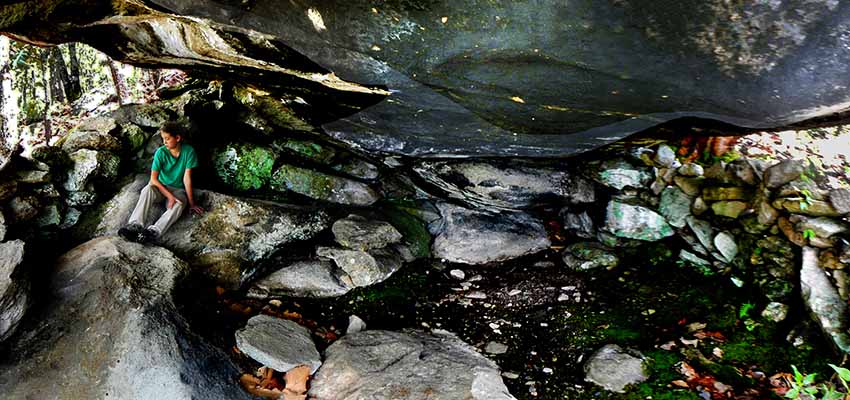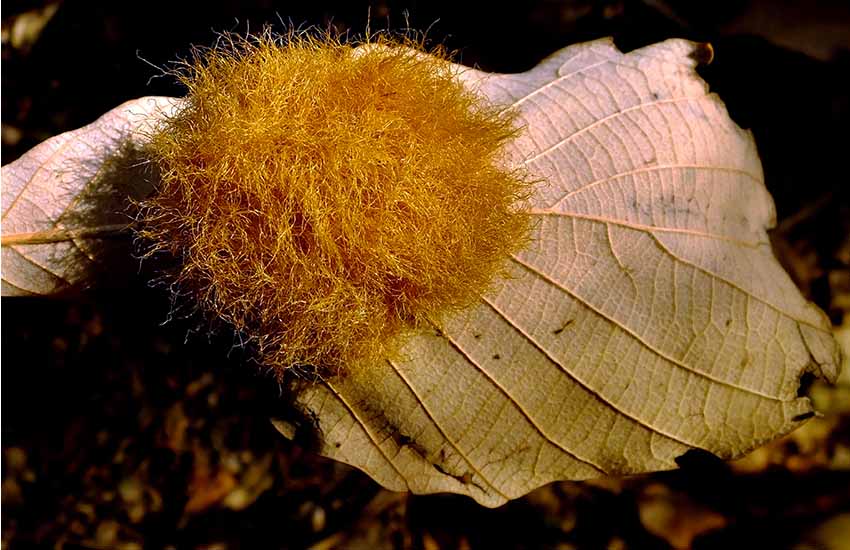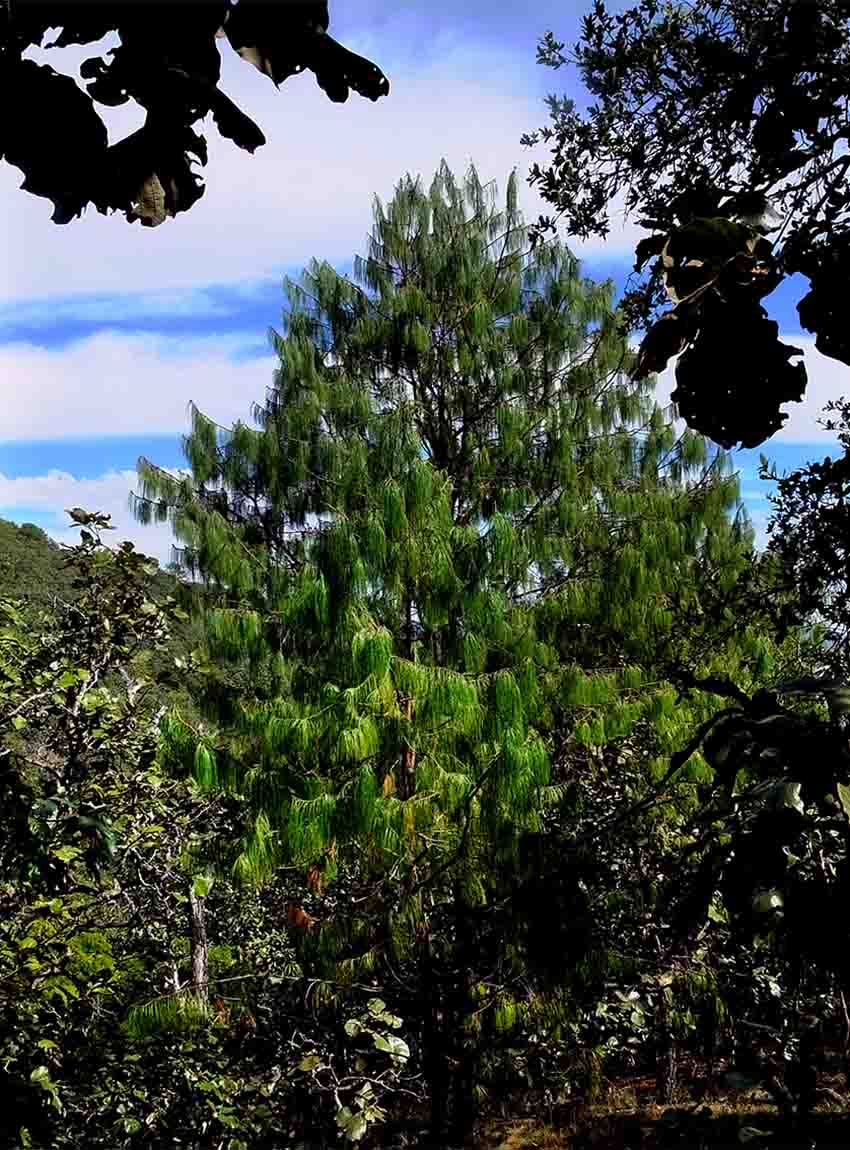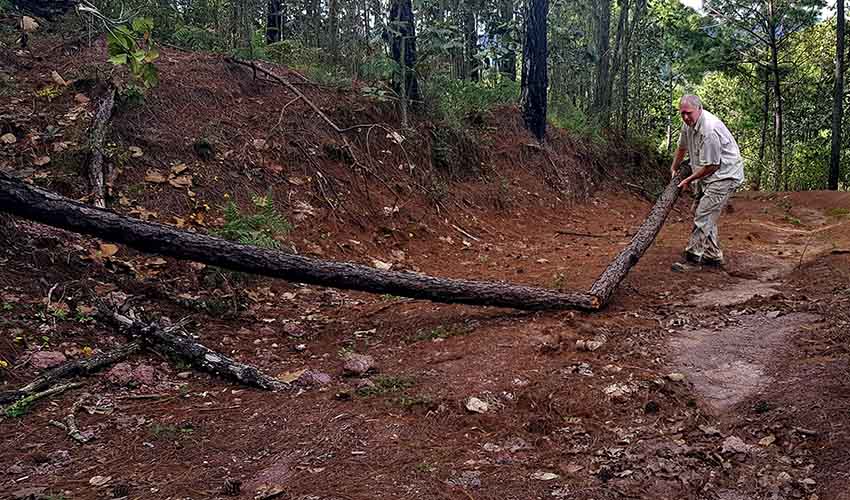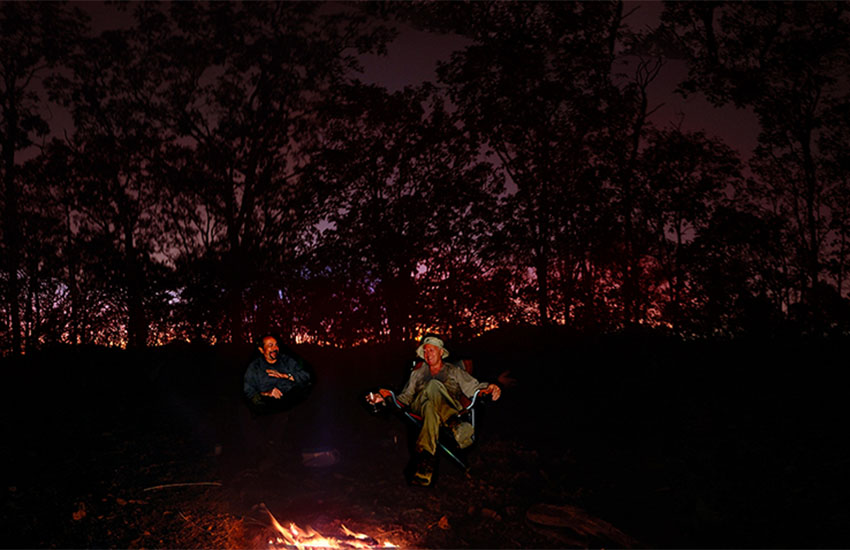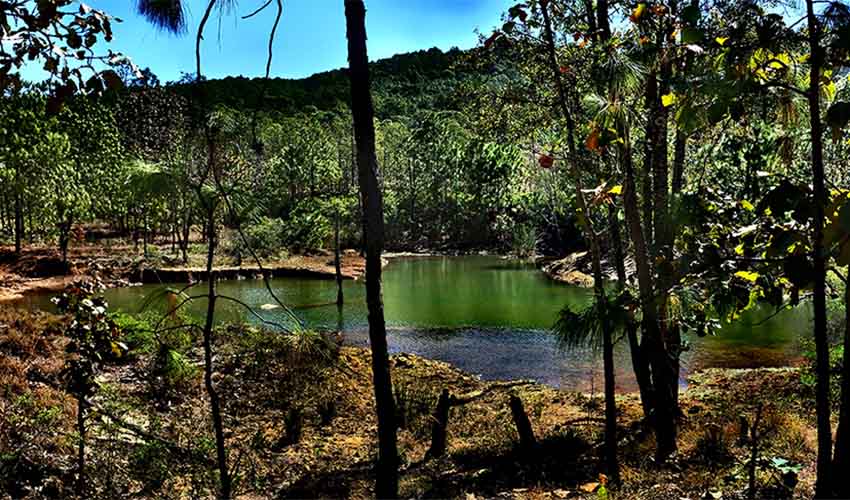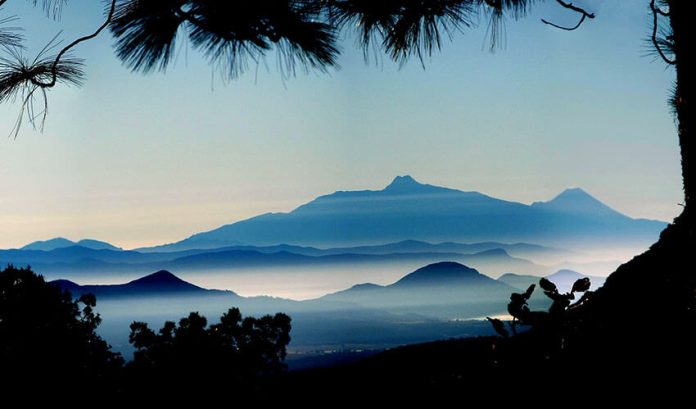Of the many mountain ranges running through the state of Jalisco, I deem La Sierra Verde the least appreciated. Good luck on finding even one man in the street in Guadalajara who could tell you where the range is located or who has ever heard of Las Piedras Bolillo, a spectacular lookout point hidden among its verdant hills.
The problem is roads: the Sierra Verde occupies an area of around 2,000 square kilometers, but if there’s even one decent road tucked away in there, I have yet to see it.
What I have seen are the roughest, rockiest, bumpiest, most washed-out excuses for a road you could ever imagine, so if you don’t have access to a serious four-wheel-drive vehicle, you can stop reading right now — unless, of course, you are an armchair explorer in search of virtual adventure.
However, if you happen to own a 4×4 or a mountain bike and want to explore territory hardly anyone else can get to, read on.
I was introduced to the Sierra Verde by geologist Chris Lloyd, who began exploring the area for its mining potential and ended up falling in love with the place for its beauty and silence.
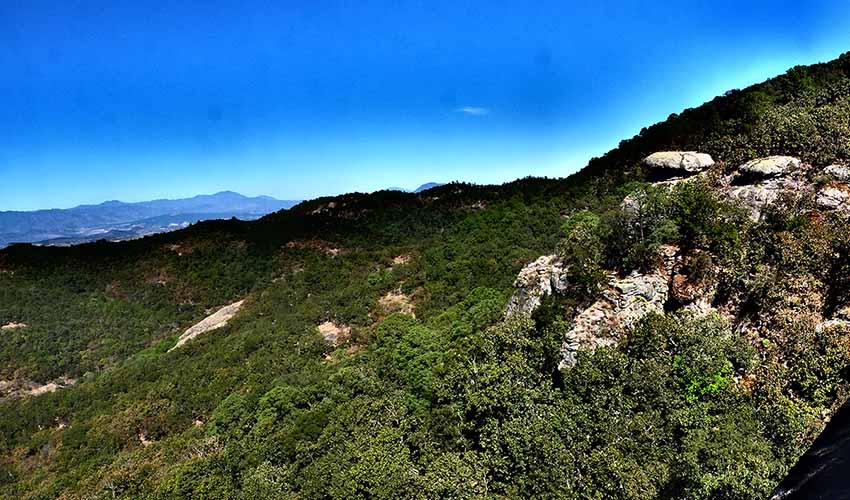
The Sierra Verde gets its name from its ubiquitous pine and oak trees, and loggers were the ones who created the web of horrendously bad dirt roads that crisscross the forest.
What’s it like navigating these brechas in a Jeep?
Well, on my first visit to the Sierra Verde, I was traveling with four other off-road vehicles. After driving for an hour, we came to a spot in the road that was so steep and so encumbered with boulders that none of those hardy 4x4s could get up it.
“Well, that’s the end of our expedition,” I thought, but my compañeros had a lot more experience at this sort of thing than I did.
Instantly, they all jumped out of their trucks, each one armed with a shovel and a heavy steel wrecking bar that was over a meter long, which they immediately applied to the boulders ¡con ganas! (with enthusiasm).
Before my eyes, they rolled the boulders away and utterly transformed that impassable brecha into a smooth, drivable road.
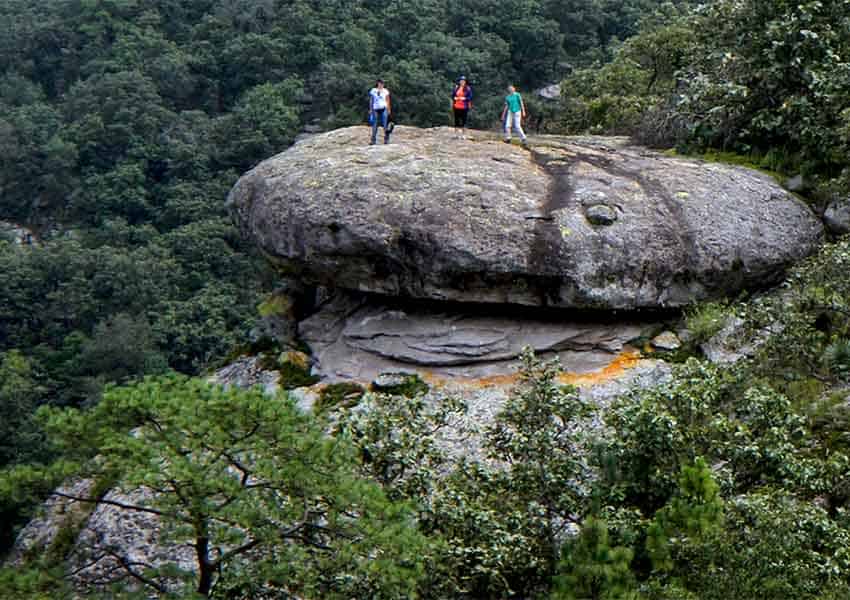
On other occasions, we have had to uproot stumps, roll heavy logs off the road and chop our way through maleza (underbrush) using machetes.
If, however, you have the right tools, the right vehicle, and a lot of gumption, you can take advantage of these ubiquitous roads to visit outstanding places like a lovely mountain peak called La Tetilla de Ameca, which I described in volume three of my book, Outdoors in Western Mexico.
On this occasion, I would like to present another outstanding attraction of the Sierra Verde: it’s a unique mirador (lookout point) I call Las Piedras Bolillo, featuring giant rocks shaped like el bolillo, the popular Mexican bun-shaped version of the French baguette, introduced to Mexico City in the 1860s thanks to Mexico’s briefly enthroned Habsburg emperor, Maximilian I.
The Piedras Bolillo are located 100 kilometers southwest of Guadalajara, off Highway 70 to Mascota, Jalisco. At an altitude of almost 2,000 meters above sea level, they offer a magnificent view of the Sierra Verde that you can enjoy without stepping out of your four-wheel-drive vehicle.
This mirador has obviously attracted some attention in the past — perhaps the ancient past — as can be witnessed by a shelter cave on the site featuring carefully constructed sidewalls.
The cave is nothing more than a protected area under one of those very same bun-shaped rocks, lying at an angle. Dig a bit on the floor and you will find plenty of potsherds. Yes, if you’d like to spend a night at this enchanting belvedere, you don’t even need to bring a tent!
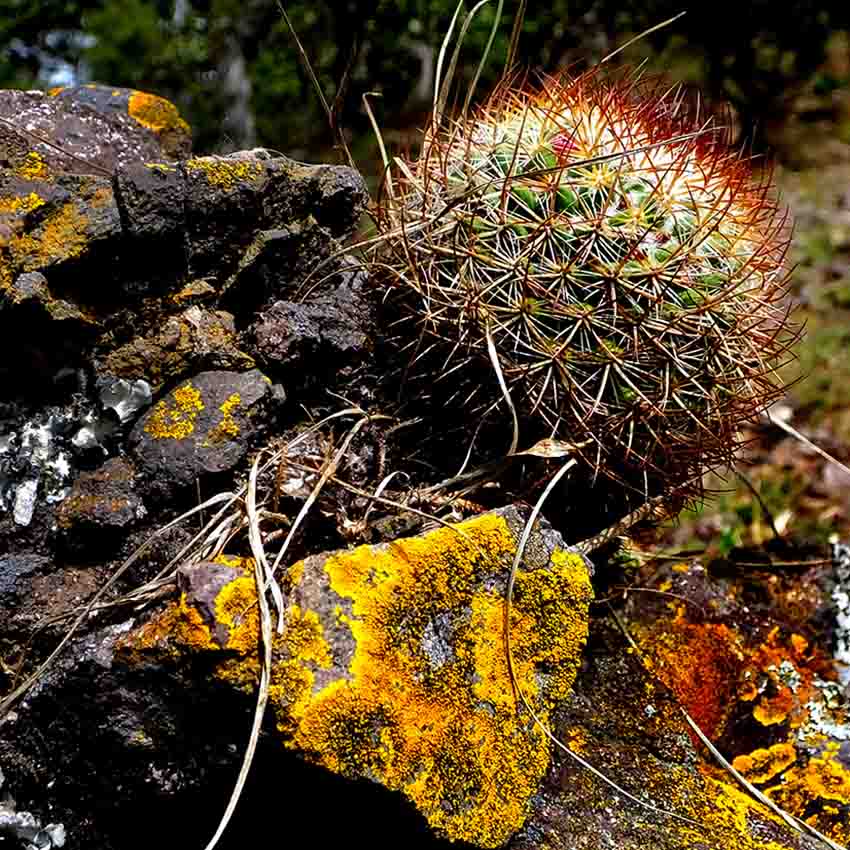
I, however, did bring my tent, and I am happy to report that the Sierra Verde turned out to be the quietest place in which I have ever camped in this country, bar none … and note that I was sleeping there on a Saturday night when raucous music tends to fill the air around even the most remote ranchito.
That’s right, I could hear no rockets going off, no radio blasting, no barking of dogs, no roar of traffic. Why, even the chorus of crickets ended its concert somewhere around midnight.
It was the most glorious silence I had experienced since sleeping inside a lava tube in Saudi Arabia. But in Hibashi Cave, I could not see the stars, whereas this mirador offers a spectacular wide-angle view of the sky, unimpeded by city lights.
From the Bolillo Rocks, you can dare all those logging roads to hike into every corner of this area, where you may be delighted to stumble upon a little waterfall surrounded by wildflowers and mushrooms, or a small lake shaded by trees covered with lichen, their branches burdened with a light-green bromeliad I’ve never seen before. And as you wander about, you may even come upon a pino triste (sad pine), whose needles point down like the branches of a weeping willow.
This tree, endemic to Mexico but considered rare in most of Mexico’s forests, is the Pinus lumholtzii, named after the Norwegian explorer Carl Lumholtz (1851–1922), who led the expedition on which the tree was discovered. At the moment, it’s on the International Union for Conservation of Nature’s Red List of endangered species in Mexico.
As you wander about in the Sierra Verde, keep an eye out to the southeast where, from most high points, you should have a magnificent view of the Nevado de Colima, 120 kilometers away, the highest mountain in Jalisco. Right next to it is the ever-smoldering Volcán de Fuego, or Fire Volcano.
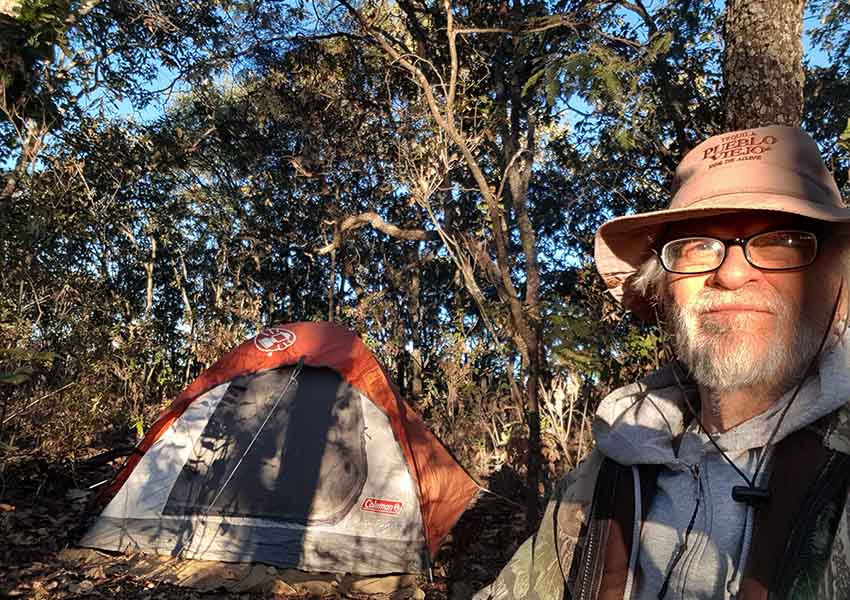
If you are gung-ho to set foot upon the Piedras Bolillo, start out by asking Google Maps to take you to FJ6C+X6M Mixtlán, Jalisco, a spot on Highway 70 where you will find an easy-to-see dirt road heading east. Follow this eastward and then southward for 6.5 kilometers until you reach a fork at N20.43540 W104.35305. Turn right here onto a road heading southwest. Follow this for 2.9 kilometers, and you should end up at the lookout point (N20.42423 W104.36862).
Driving time, if all goes well, might be about 3 1/2 hours, starting from the center of Guadalajara.
This route is shown on Wikiloc.com as Piedras Bolillo, and I hope that the map will help you find your way — but be warned: once you’ve been seduced by the Sierra Verde, you’ll find that you have to keep going back again and again!
The writer has lived near Guadalajara, Jalisco, since 1985. His most recent book is Outdoors in Western Mexico, Volume Three. More of his writing can be found on his blog.
